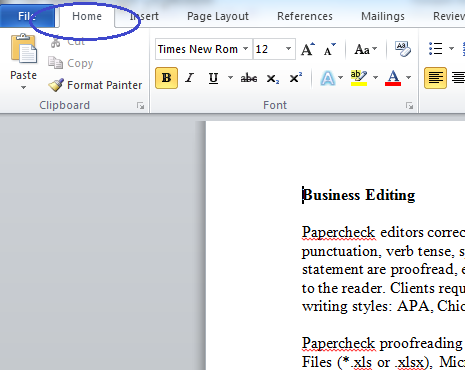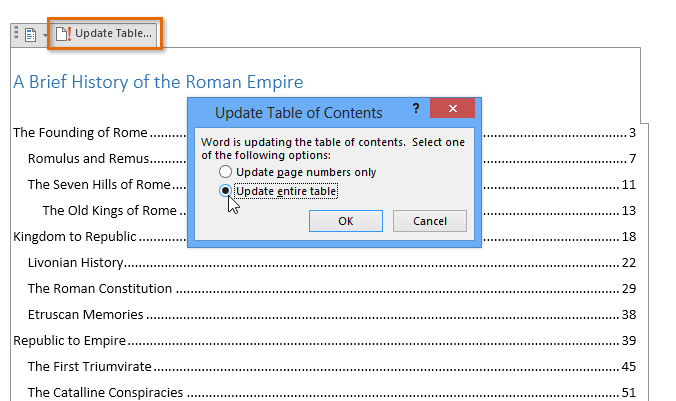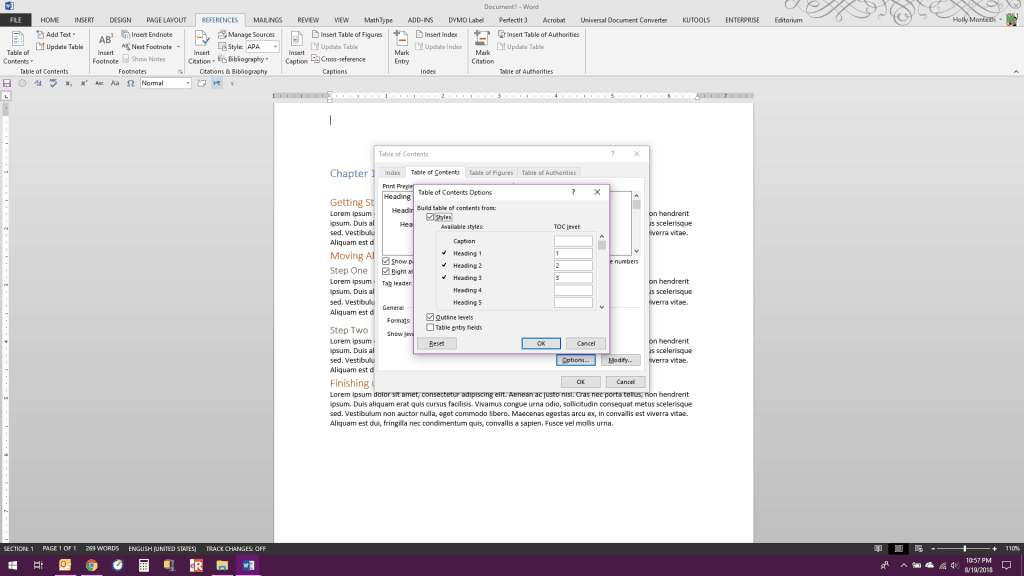
It will have to be a single word with no spaces, but I believe underscores are okay. Name your bookmark something really creative like “ChapterOne”. That will open a dialogue box that looks very similar in both versions of Word: In Word 2013, you will also have to click on the “links” tab and choose “bookmarks” from the little pull-out menu. In Word 2003, you will see a “bookmarks” option towards the bottom of the drop-down.

Next, in both old and new versions of Word, you must navigate to the “insert” tab or menu.

Step one: go to Chapter One in your manuscript and highlight the words that you want to use as your navigation point. The first is to bookmark your chapter headings. There are two main technical tasks for creating a table of contents. If you have fifteen chapters divided into three parts, be sure to include the “Part 1, 2, and 3” divisions so readers don’t have to guess which chapters fall under which acts. Make sure you include every point that you want a reader to be able to find easily. This page is going to be the first thing that your readers see when they flip past the title page and front matter, so you want it to be clean and easy to navigate. Every electronic device will render it differently, and it’ll be very frustrating to the reader. A lot of fancy text formatting gets stripped out of your document when you upload it, so don’t worry too much about having all your chapter names or page numbers perfectly aligned or using a long string of ellipses for spacing or anything like that. The best thing to do is keep your eBook TOC pages pretty simple.
#Hyperlink table of contents word 2013 on each page software#
Here is a simple step-by-step guide to formatting your TOC in both Word 20, because some of us haven’t actually updated our software in the past decade and oh boy do I really need a new computer. If you have access to pretty much any version of Microsoft Word, the process can take just a few minutes. It’s easy to see why that’s a problem for non-fiction books that cover distinct subject matter in each chapter, but it can also be an issue for readers who want to review or clarify a convoluted family history or new technology that you introduced three hundred pages ago.Ĭreating a linked table of contents is not as complicated as it seems. Most eBook apps will hold a user’s place between sessions, but the absence of page numbers can make it very difficult for readers to flip back and forth between chapters without tabbing endlessly through the parts they’ve already read. One of the most important is the table of contents (TOC). While Amazon KDP, Smashwords, and other self-publishing platforms have started to do a lot of the formatting work automatically when authors upload their content, there are a few things that still have to be done manually. But eBooks have additional mechanics that can make or break a reader’s good opinion.


A lot of authors make it even harder by failing to develop their product to its fullest potential before sending it out into the world.Īn attractive cover is a good place to start, and targeting your audience appropriately can get the right eyeballs onto your work. Whether you’re going it alone or delegating some of the buzz-building to a paid PR team, marketing a self-published novel is a tough gig. In this golden age of digital self-publishing, there’s only one thing harder than writing a good book: selling it. Keep an eye out for fun, exclusive Launch Day stuff by liking my page on Facebook! Note: The Kindle edition of Dark the Dreamer’s Shadow is now available for pre-order! Paperbacks can be had on August 17.


 0 kommentar(er)
0 kommentar(er)
